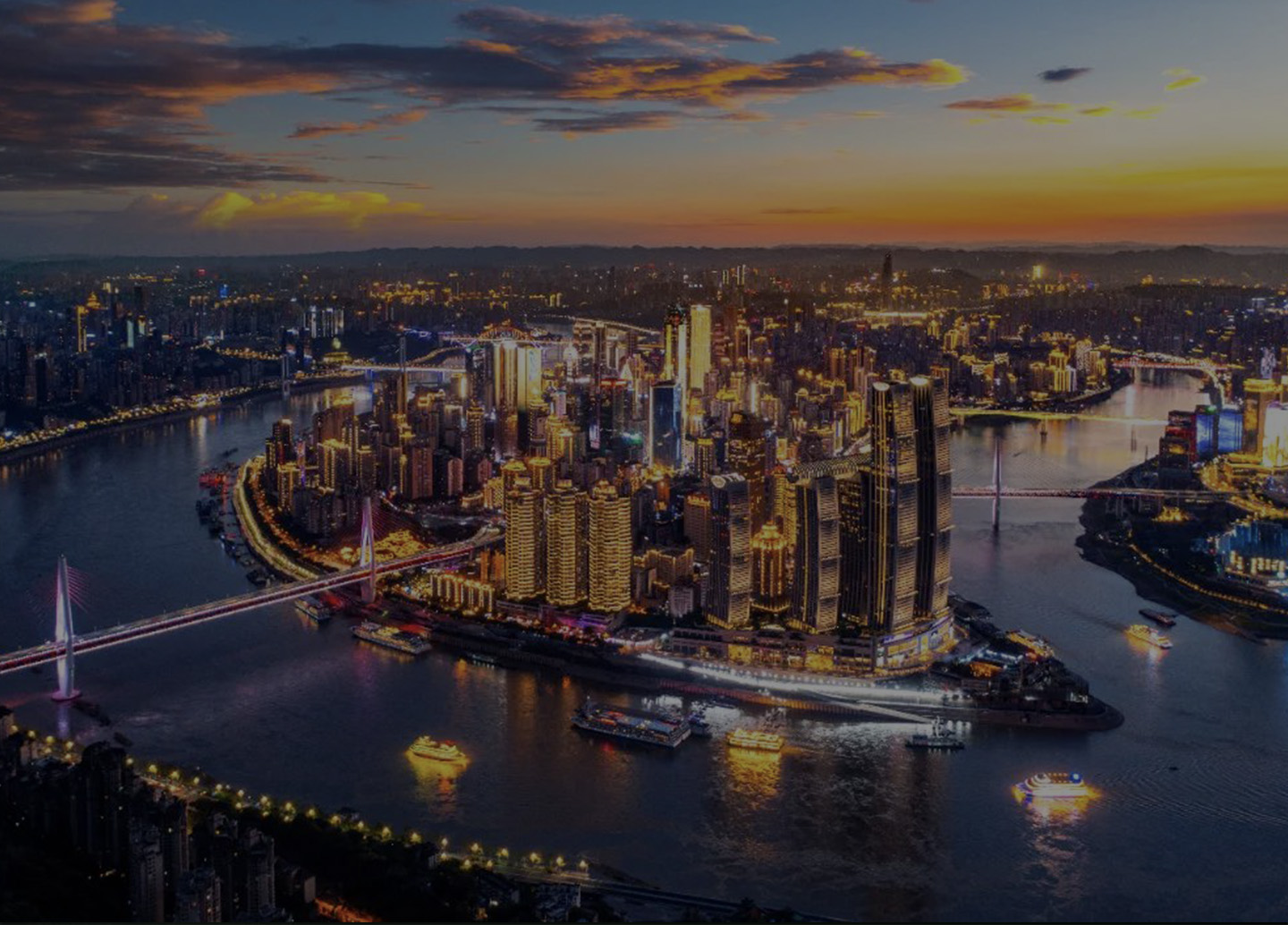Contact us
- Chongqing Industrial Design Promotion Center
- No. 1, Shangqingsi Road, Yuzhong District, Chongqing, People's Republic of China
- +86-23-60332626
- hi@chongqing.design

Chongqing is located in the southwest inland region of China, along the upper reaches of the Yangtze River. With an area of 82,400 square kilometers, it encompasses 38 districts and counties (26 districts, 8 counties, 4 autonomous counties). The permanent population is 321.33 million, with an urbanization rate of 70.96%. The majority of the population is Han Chinese, with ethnic minorities mainly consisting of Tujia and Miao.
Chongqing is a city known for its unique combination of mountains and rivers. The landscape is predominantly hilly and mountainous, with mountains accounting for 76% of the area. The Yangtze River runs through the entire region, spanning 691 kilometers and converging with other rivers such as the Jialing and Wu. It boasts abundant tourist resources, including the Three Gorges of the Yangtze River, the Dazu Rock Carvings (a UNESCO World Heritage site), the Wulong Karst, and Nanchuan Golden Buddha Mountain, among other breathtaking landscapes.
Chongqing is also a national pilot zone for integrated urban-rural development, encompassing 38 districts and counties (including autonomous counties), 1,031 towns and streets, 7,959 administrative villages, and 3,272 communities. All 1,919 impoverished villages have been lifted out of poverty, and 1,482 beautiful and livable rural areas, as well as 54 demonstration areas for rural living environment improvement, have been established. Chongqing has achieved the United Nations’ 2030 Sustainable Development Agenda poverty reduction goal ahead of schedule, establishing a pattern of social governance characterized by joint construction, co- governance, and shared benefits.
Chongqing, a renowned historical and cultural city in China, has a recorded history of over 3,000 years and is considered the birthplace of Ba-Yu culture. The name “Yu” (the official abbreviation for “Chongqing”) derived from the ancient name “Yushui” (“Yu” Water), which referred to the Jialing River running through the city. Over time, Chongqing underwent various name changes. For example, during the Northern Song Dynasty in 1102 AD, it transitioned from Yuzhou to Gongzhou. In the 16th year of the Chunxi period of the Southern Song Dynasty in 1189 AD, Gongzhou was elevated to the status of Chongqing Prefecture. In 1891, Chongqing became one of the earliest inland trading ports opened to foreign countries in China.
Chongqing is rich in historical and cultural heritage, with extensive cultural resources. The city provides public cultural facilities, including libraries, cultural centers, museums, and art galleries, accessible throughout the city. Over 140 industrial heritage sites and 4,687 intangible cultural heritage items are protected. Additionally, 11 exhibition halls and a vast digital cultural resource database focus on intangible cultural heritage.
With more than 30 science popularization bases, Chongqing caters to diverse needs in the creative field, such as human-machine interaction, universal design, and intelligent applications. The city emphasizes the preservation of industrial heritage, with 5 national and 9 municipal-level industrial heritage sites. The Chongqing Industrial Museum aims to promote industrial culture and spirit.
Chongqing has established 66 intangible cultural heritage workshops, 100 protection and inheritance centers, 87 productive protection bases, and 109 education bases. Over 10,000 activities promote heritage protection and inheritance, including initiatives in communities, schools, and scenic areas. The “Yes’m Autumn” project, selected as part of the Third Global Poverty Reduction Case Studies List, benefits vulnerable groups such as rural women, impoverished households, people with disabilities, and the elderly.
Chongqing’s museums, including the Chongqing China Three Gorges Museum, Jianchuan Museum, Luo Zhongli Art Museum, and Chongqing Art Museum, regularly host free exhibitions, training programs, and interactive experiences, totaling over 2,000 events per year.
Chongqing is one of China’s six major old industrial bases and the largest economic center in the upper reaches of the Yangtze River. In 2022, it had over 3.4 million market entities, a total GDP of nearly $420 billion, a testament to its a strong industrial foundation. With a complete range of manufacturing sectors, Chongqing has the highest automobile production in China, reaching 3.16 million vehicles per year, ranking first in the country. Every three laptops and every 20 mobile phones globally are made in Chongqing.
At the same time, Chongqing is accelerating the construction of a world-class smart-connected new energy vehicle industry cluster, an electronic information industry cluster, and a high-level modern manufacturing cluster system. Infrastructure development in Chongqing is progressing rapidly, with 4,000 kilometers of expressways and the completion of a “one hub and ten mainlines” railway network. The construction of an “asterisk-shaped” high-speed rail network is also advancing, with 1,940 kilometers of lines under construction or in operation.
In 2022, Chongqing transported 148,000 standard containers and goods worth 25.1 billion yuan through the Western Land-Sea New Channel, representing a year-on-year growth of 32% and 34%, respectively, accounting for 28% of the total along the channel. It opened 78 new shipping routes, covering 393 ports in 119 countries and regions along the channel. The China-Europe Railway Express (Chengdu-Chongqing Route) operated over 5,000 trains, accounting for nearly 30% of the national total, with nearly 50 stable operating routes and extending to more than 100 cities in Asia and Europe. The Shanghai-Chongqing direct express line operated 1,196 voyages, transporting 324,000 TEUs (Twenty-foot Equivalent Units), with a year-on-year growth of 0.3% and 17.4% respectively. The river-sea intermodal transport is connected to over 600 ports in more than 200 countries and regions around the Pacific Ocean and the Atlantic Ocean.
In terms of international air routes, Chongqing has opened 109 international (regional) routes, covering 80 cities in 36 countries worldwide.

